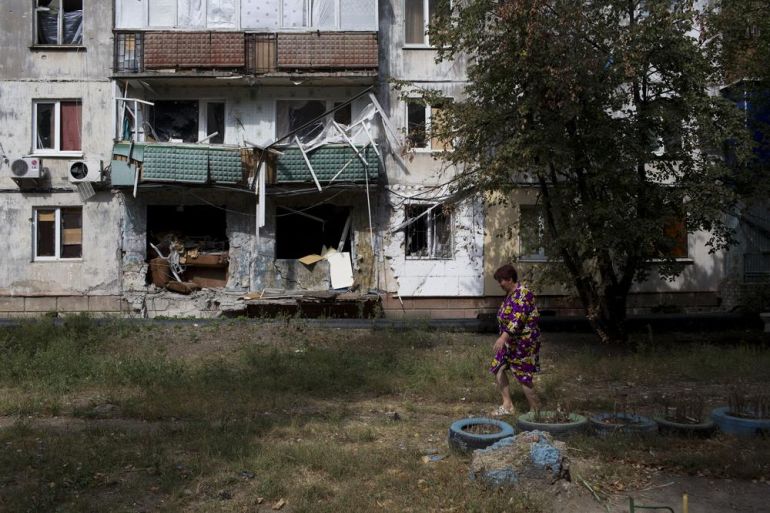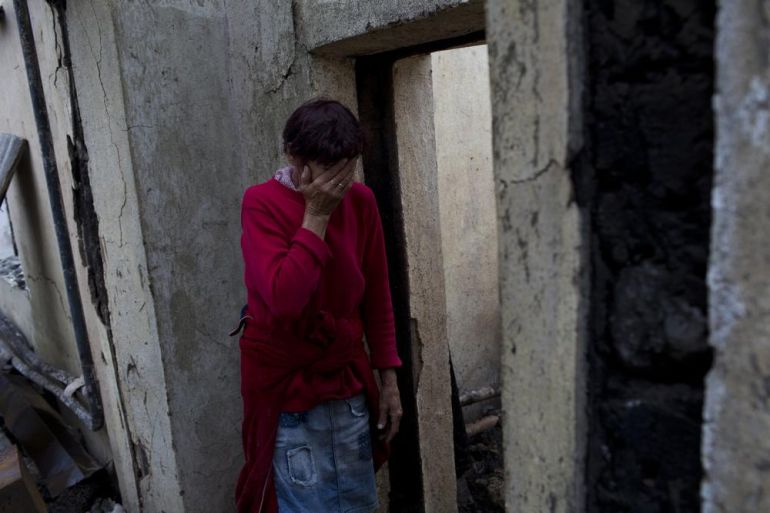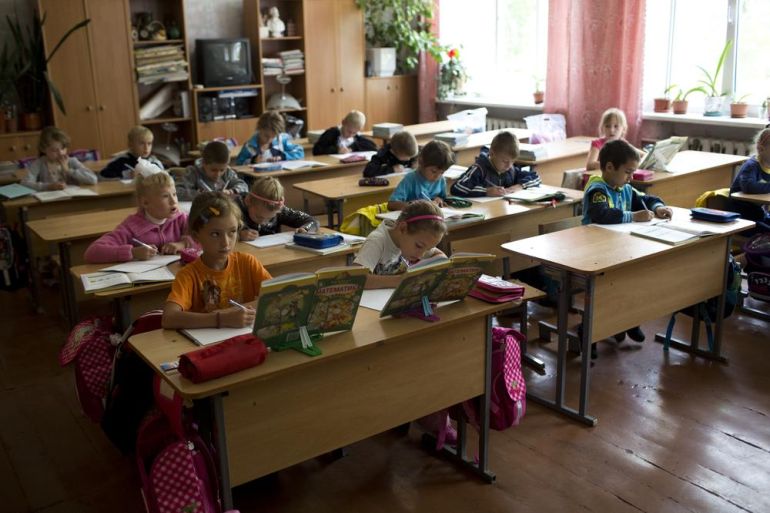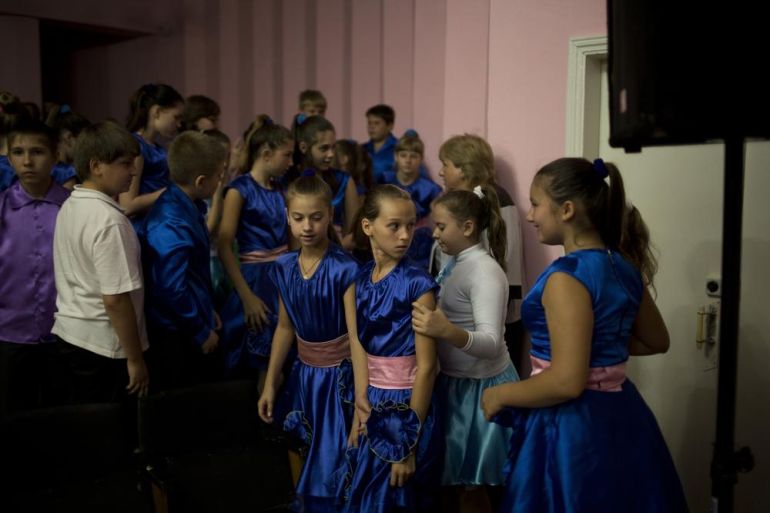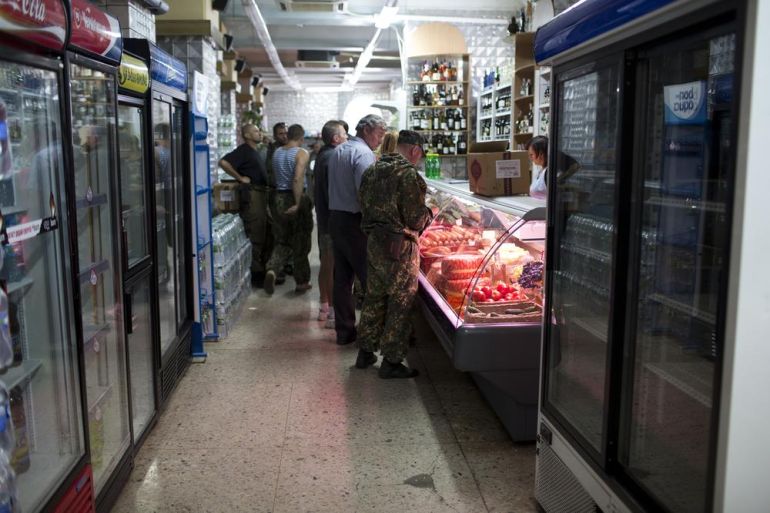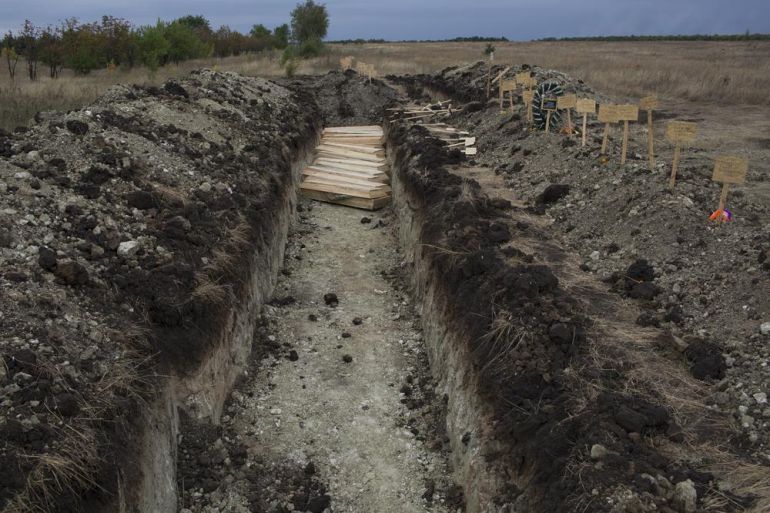In Pictures
In Pictures: Destruction in Ukraine’s Luhansk
More than 500 people have been killed in the contested city, where a shaky ceasefire holds.

Luhansk, Ukraine – The road into Luhansk is surreal, like something out of the apocalypse. Near the airport, a shell-shattered, abandoned tank sits at the top of a freeway on-ramp. In the village of Lutuhyne, more than 30 armoured personnel carriers and troop trucks lie burnt to a crisp under blackened, skeletal trees. Children collect scrap metal from their bodies.
Inside the city – which had a population of 400,000 before the conflict began – the scene is no better. The ceasefire that began two weeks ago has allowed people to finally come out of bomb shelters and collect the dead. Some corpses had been lying outside for three weeks. Anatoly Turevich, the director of Luhansk’s morgue, has listed 526 dead since May 1. More than 80 bodies were recently buried in a mass grave. Some remain unidentified; some, hopefully, will be found by relatives when they return.
Though the physical damage to Luhansk – or Lugansk, as it’s pronounced in Russian – has been substantial, the emotional trauma its people have faced is immeasurable. For more than two months, the Ukrainian army closed the circle on the city, until it was nearly cut off.
The centre of Luhansk is in tatters, but villages like Bolshaya Verkhunka, on the northeastern edge of the city, are devastated. Roughly one of every two houses there seem to have suffered serious damage or been complete destroyed.
In one home, the walls collapsed under shelling, trapping Vitaly and Marina Yushko in their basement. The shelling caused the rubble to catch fire, which burned the brother and sister to death. They are buried in a grave in their backyard – a grave that has not been reported to the authorities – giving weight to speculation that the death toll may well be higher than the 3,000 estimated by the United Nations.
But many in Luhansk – like Turevich, the morgue director; and Valentina Kiyashko, the city’s director of education – are working to bring the city back to life. At a recent school event called Luhansk My Love, students sang and danced – but some cried. The wounds are fresh and the pain out for everyone to see. Of more than 60 schools in the city, only six have opened. Only 1,500 out of a student population of about 33,000 remain.
With a shaky ceasefire in place, some hope that life may slowly return to normal. But both sides continue to shoot and rearm. For many, it seems the war is a long way from being over.


